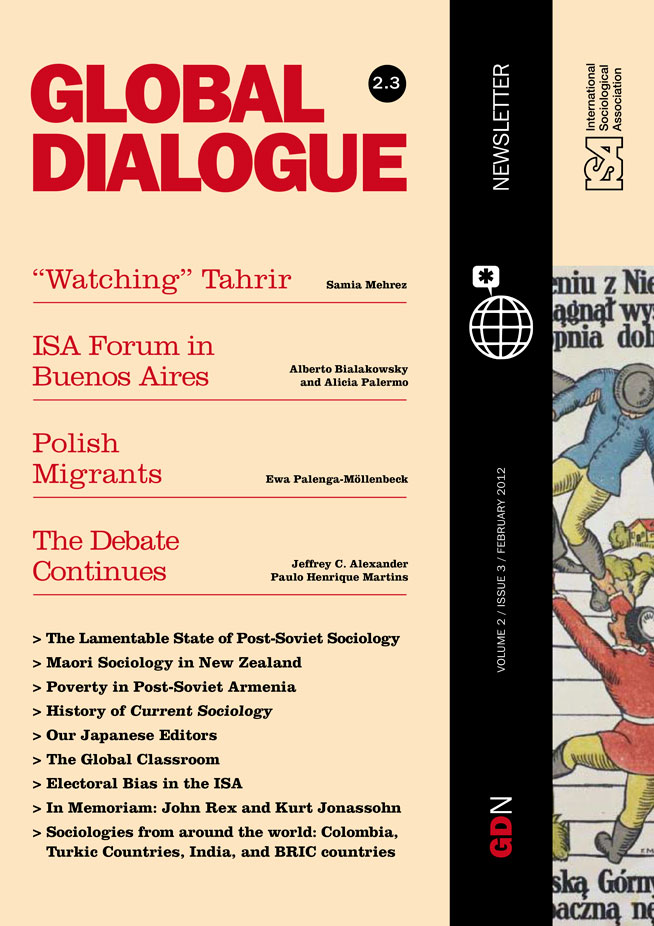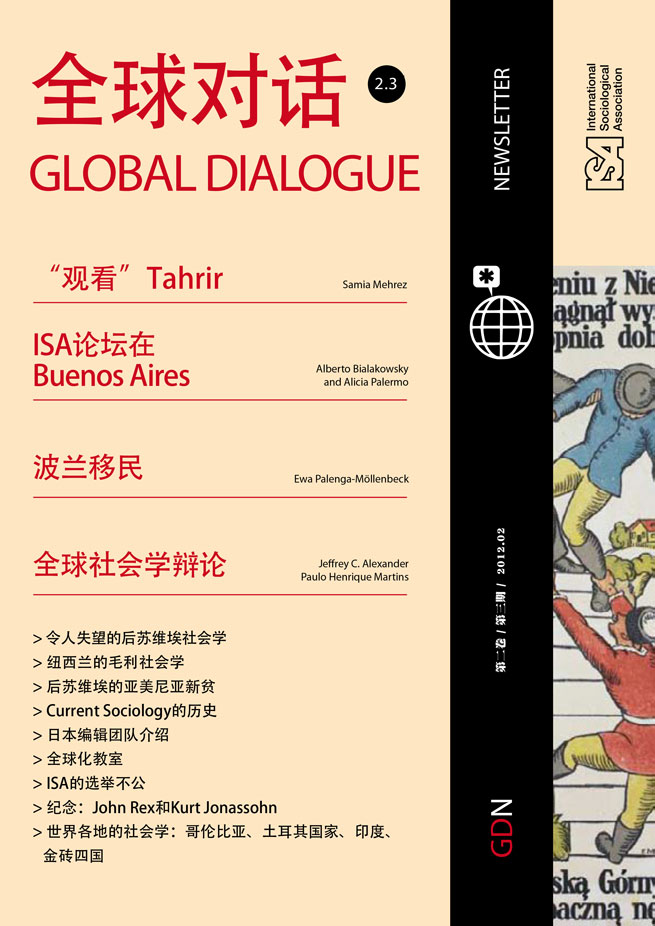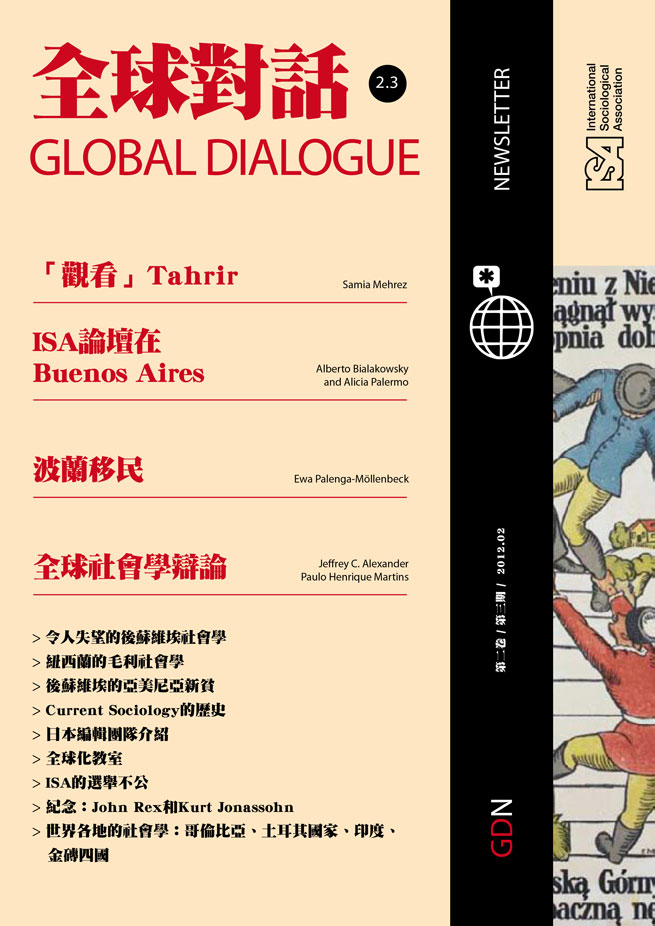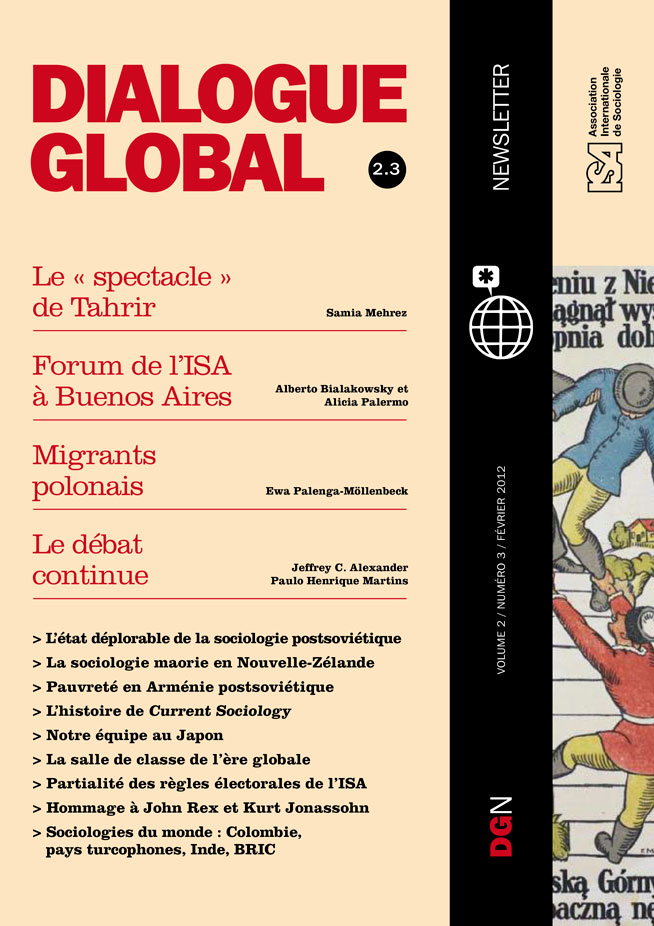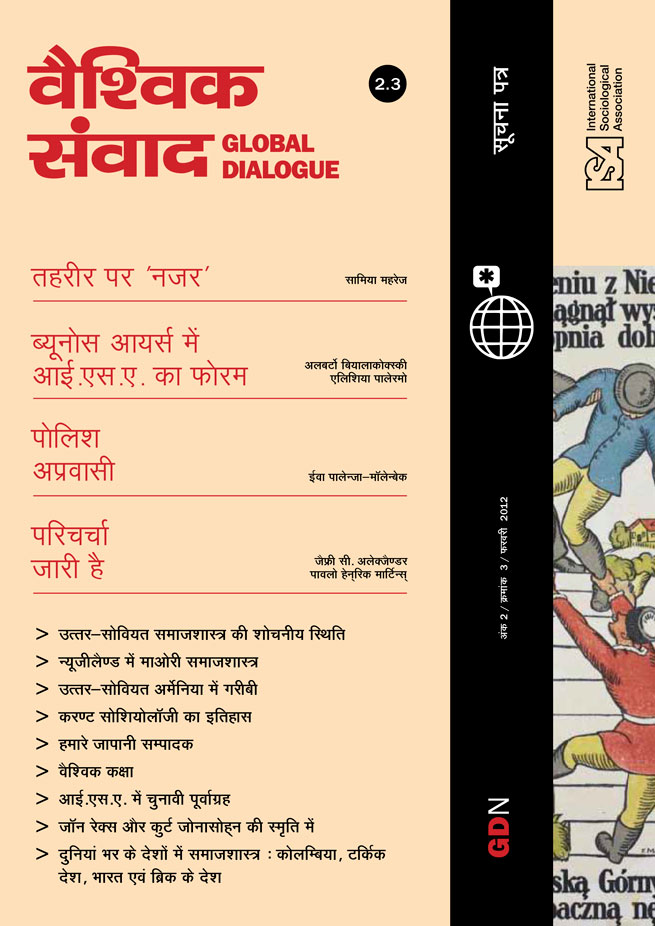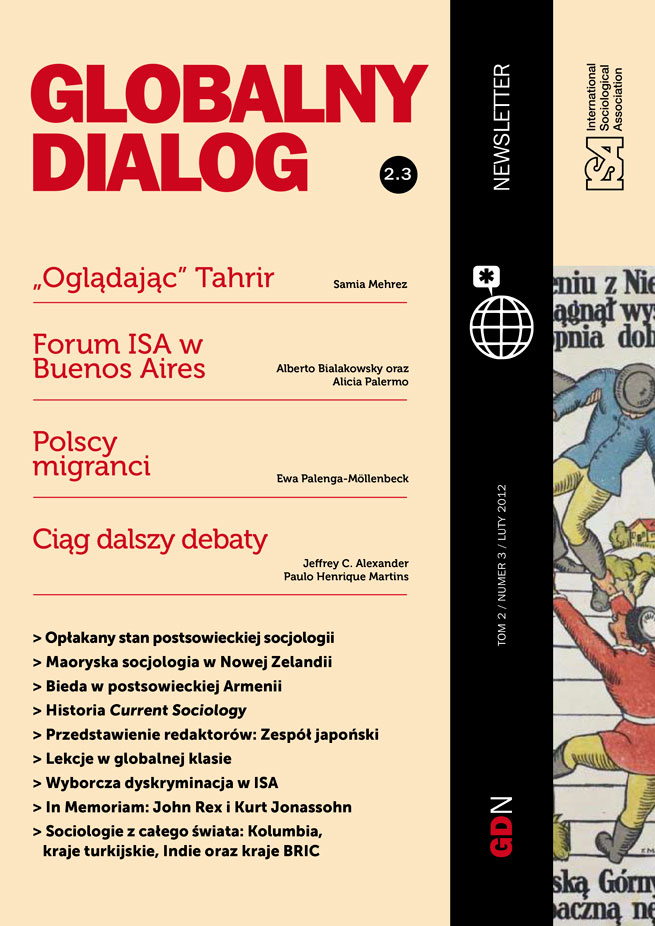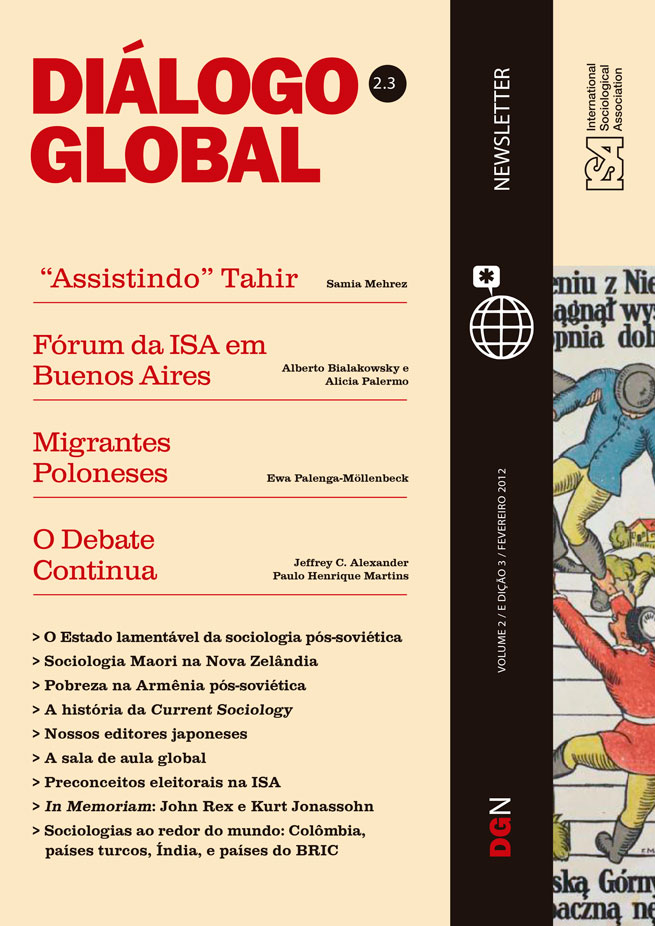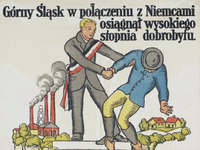“Watching” Tahrir
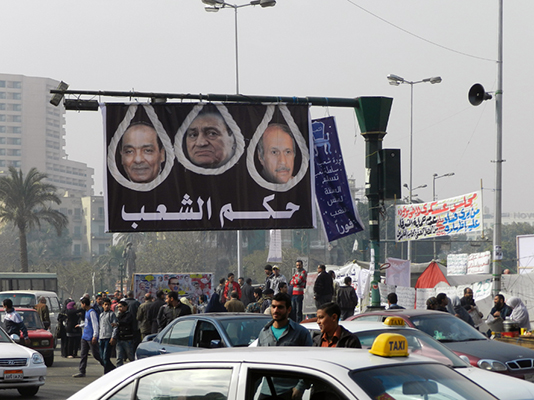
March 01, 2012
Samia Mehrez is a distinguished Professor of Arabic Literature in AUC’s Department of Arab and Islamic Civilizations and Director of the Center for Translation Studies. I met her recently in Cairo where she showed me chapters from her forthcoming Translating Egypt’s Revolution – exciting narratives from Tahrir written with her students. I asked her to write this piece for Global Dialogue.
(Michael Burawoy)
By the time this article is published, one year will have passed since the beginning of the January 25 uprising in Egypt that deposed former President Hosni Mubarak on February 11, 2011. The rebellion promises to remap, in many complex ways, the future of Egypt as well as its position in both the region and the world. Over the past months, the January uprising – with its ongoing proliferation of narratives oscillating between thawra (revolution) and inqilab (coup) – continues to resist and defy, at least where Egyptians are concerned, unitary naming and framing. One thing remains certain however: January 25, 2011 and the ensuing legendary eighteen days in Tahrir (not to mention the successive waves of violent confrontations, massive demonstrations, and persistent sit-ins) marked the beginning of a new historic and symbolic life for Midan al-Tahrir (Tahrir Square) that has become the icon of Egypt’s ongoing uprising and the barometer for a nationwide revolt that continues to transform Egyptians in many significant ways.
For a while, after January 25, people were anxious that Midan al-Tahrir, where hundreds were martyred and thousands wounded and detained, would become a spectacle, a mere display of itself. They feared it would become, as my colleague Amr Shalakany put it “a place where you can go and ‘watch’ the revolution, take a look at it, have some of its taste and then go home to another time zone altogether.” True, people did come to “watch the revolution” in Midan al-Tahrir and many more continue to do so at home in front of the TV and on social media. But through this very process of “watching” many have become implicated as active participants and have transformed that “watching,” that “spectacle,” into revolutionary action that has produced new subjectivities.

Rather than supplant political activity, “spectacle” in this context became a mode of revolutionary mobilization and radicalization. Indeed, the successive waves and “spectacles” of the Egyptian uprising, both celebratory and violent – all massively documented, disseminated, and circulated – have had a dramatic, and arguably permanent impact. Egyptians have developed a new relationship to space (both public and private, real and virtual). They have acquired a newfound power of ownership of their bodies, and they have been determined to exercise their right to language, whether oral or written.
Over the past 30 years the Mubarak regime – a regime that in large part continues to be reproduced by the ruling military junta in post-January 2011 Egypt – exercised control over public space, public politics and public culture. This was accomplished through the enforcement of emergency laws that continue to legitimate detention and torture, and an erratic but relentless censorship of freedom of expression. But this has not stopped the ongoing contest over the occupation of public spaces and the mobilization of mass protests.
The multiple “spectacles” of the Egyptian uprising have at once marked a dramatic rupture with the regime’s politics of intimidation. They have enabled the beginning of a fearless era for Egyptians who continue to defend their newly won freedom and ownership of space, body, and language through a myriad of creative political and cultural practices whose semiotics, aesthetics, and poetics have inspired parallel uprisings worldwide. These “spectacles” – the last of which was in Tahrir on New Year’s Eve, the first ever in the history of the midan – have served to radicalize Egyptians and to fuel continued collective mobilization on the ground. This mobilization continues despite the enormous price paid in human lives and despite continuing counter-revolutionary attempts by the ruling military council and its new allies, the Muslim Brotherhood and the Salafis, to exhaust the uprising of its energy and re-intimidate Egyptians through a politics of fear and discrimination. Indeed, these revolutionary “spectacles” prompted staged and short-lived “counter-spectacles” throughout the past year by “supporters” of Mubarak and the ruling SCAF (Supreme Council of the Armed Forces) that only confirmed the power of the former and the transparency of the latter.
Initially, the “spectacle” of the Egyptian uprising exploited, radicalized, and revolutionized rituals of the traditional mulid – a popular celebration of the birthday of a venerated spiritual figure whose codes of conduct are familiar to all Egyptians across class divides. Mulid have become an integral part of Tahrir demonstrations throughout the past year. This ritualistic, festive, celebratory mode brought forth and sustained the birth of the “Independent Republic of Tahrir,” the sheer spectacle of which brought millions of Egyptians to the streets and continues to inspire ongoing demonstrations nationwide. One of the most radical outcomes of “watching” the revolution in Tahrir has been the thorough understanding that Tahrir (which means “liberation”) is not just a physical place but a collective state and consciousness through which the basic demands of Egypt’s uprising – ‘ish, Huriya, ‘adala igtima‘iya (bread, freedom, social justice) – continue to amass signification and translations. Ensuing and repeated “spectacles” of SCAF violence, as well as less visible violations and intimidation (testimonies on the beating, electrocuting, and maiming of protestors, virginity tests for detained women demonstrators, military trials for civilians, the killing of tens of Coptic demonstrators with armored military vehicles, raiding media and NGO offices, harassing and arresting foreign reporters, rigging election ballots, violating and stripping women’s bodies, etc.) all circulated on social media and private satellite channels ever since last February.
The continuing episodes of violence have denuded and discredited the initial romance between the army and the people. But more and more Egyptians know that the revolution continues not just in Egypt and the region, but no less significantly in multiple globalized translations of the “spectacles” of Tahrir, all resounding across different languages: the people demand the downfall of the regime (al-sha‘b yurid isqat al-nidham).
Samia Mehrez, American University in Cairo, Egypt


